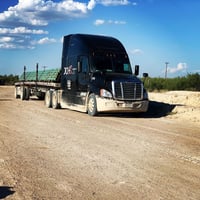Managing freight and logistics costs can be a significant challenge for a small business owner....
Navigating Federal and State Regulations on Overweight Freight: A Comprehensive Guide
In the world of transportation and logistics, the safe and efficient movement of goods is of paramount importance. Overweight freight poses unique challenges, prompting governments at both the federal and state levels to enact regulations to ensure the safety of roads and bridges. In this blog post, we will delve into the intricate web of regulations governing overweight freight, with a focus on federal guidelines and state-specific nuances.
Federal Regulations:
At the federal level, the regulation of overweight freight primarily falls under the purview of the Federal Highway Administration (FHWA), a division of the U.S. Department of Transportation. The FHWA sets standards and guidelines that apply uniformly across the country, providing a baseline for all states to follow.
Key Federal Regulations Include:
1. Axle Weight Limits: The FHWA establishes maximum allowable weights for individual axles, considering factors such as the number of axles and their spacing. These limits aim to distribute the weight evenly, preventing excessive stress on any one axle. For example, a single axle limit might be set at 20,000 lbs, and tandem axle limits at 34,000 lbs.
2. Gross Vehicle Weight Rating (GVWR): The GVWR is the maximum weight a vehicle is rated to safely carry, including its own weight and the weight of any cargo. Federal regulations dictate limits on GVWR to ensure the structural integrity of vehicles and the safety of roadways. Typical GVWR limits for standard vehicles might range from 80,000 to 100,000 lbs.
3. Bridge Formula: The FHWA's Bridge Formula addresses the spacing and weight distribution of axles to prevent damage to bridges and road infrastructure. This formula is particularly crucial for trucks carrying heavy loads over bridges. The formula takes into account the number of axles and axle spacings to calculate a maximum allowable weight.
Overweight Limits in Detail:
Federal regulations outline specific overweight limits for different categories of vehicles. For example, a standard five-axle vehicle may have a maximum gross weight limit of 80,000 lbs. However, vehicles with additional axles, such as those used in specialized hauls, may have higher weight allowances.
It's important for carriers to be aware of the weight limits for each axle configuration to ensure compliance with federal regulations. Non-compliance can result in fines and penalties, underscoring the significance of accurate load distribution and adherence to weight limits.
Effectively managing overweight freight requires a deep understanding of federal regulations, including axle weight limits, GVWR, and adherence to the Bridge Formula. Carriers must stay informed about these guidelines, and the provided resources offer a reliable foundation for compliance, contributing to safer roads, protecting critical infrastructure, and streamlining the movement of goods across the country.
Resources:
The information provided in this blog post is sourced from reputable government publications, including:
1. Federal Highway Administration (FHWA): https://www.fhwa.dot.gov/
2. U.S. Department of Transportation: https://www.transportation.gov/
These official sources offer detailed information on federal regulations governing overweight freight, axle weight limits, GVWR standards, and the Bridge Formula. Carriers and logistics professionals are encouraged to refer to these resources for the most accurate and up-to-date information.





